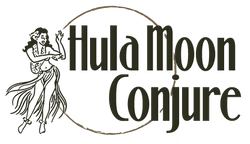
Hula, the traditional dance form of the Hawaiian Islands, embodies a deep spirituality that connects practitioners with their ancestors, their land, and the divine. Rooted in ancient Hawaiian culture, hula is more than just a dance; it's a sacred art form that carries profound spiritual significance.
At its core, hula is a storytelling medium. Through graceful movements and gestures, dancers convey narratives of the islands' history, myths, and legends. These stories often revolve around the gods and goddesses of Hawaiian mythology, depicting their deeds and interactions with mortals. In this way, hula becomes a vehicle for preserving and passing down cultural heritage, keeping alive the wisdom and traditions of generations past.
Central to the spirituality of hula is the concept of mana, a divine power that flows through all living things. Dancers believe they channel this mana as they perform, connecting with the spiritual essence of their ancestors and the natural world. Through hula, practitioners seek to honor and respect the land, the ocean, and the elements, recognizing them as sacred manifestations of the divine.
Moreover, hula is deeply intertwined with the rhythms of nature. Dancers often draw inspiration from the environment around them, incorporating movements that mimic the swaying of trees, the crashing of waves, or the flight of birds. By attuning themselves to the natural world, hula practitioners cultivate a sense of harmony and reverence for the interconnectedness of all life.
In addition to its cultural and natural elements, hula also holds a personal and communal spiritual dimension. For many practitioners, dancing hula is a form of prayer, meditation, and self-expression. It offers a means of connecting with one's innermost emotions, aspirations, and struggles, while also fostering a sense of belonging and camaraderie within the hula community.
In essence, the spirituality of hula transcends mere dance, encompassing a profound reverence for the past, a deep connection to the land and its divinity, and a personal journey of self-discovery and communion with the divine. Through its rich tapestry of movement, music, and meaning, hula continues to inspire and uplift both its practitioners and audiences, serving as a timeless expression of the aloha spirit that defines Hawaiian culture.
